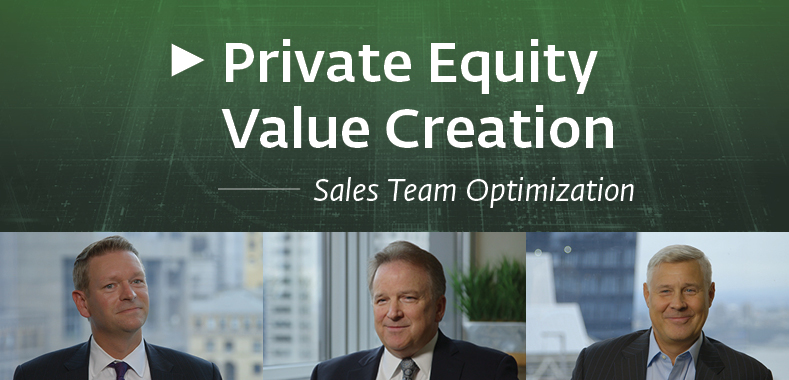How Sterling Formulated Its Value-Add Network
Download the article here
Chicago-based Sterling Partners leverages a broad network of people both within and outside of the firm to help its portfolio companies generate growth ideas and execute on an ever-iterating plan. Privcap spoke with principal Matt Hankins about the firm’s approach to human capital, growth strategy development, and M&A.
Privcap: How has Sterling structured itself to add operational value to its portfolio companies?
Matt Hankins, Sterling Partners: We spend our time in three key areas: strategy, human capital, and capital structure and acquisitions. Those are the key areas that we focus on to add value. We have three folks within the firm who are exclusively focused on helping our portfolio companies with human capital. And by that I largely mean building out the board of directors, as well as senior-level executives. We really look to build out an independent board for our portfolio companies. We always try to have an outside chairman … an outside audit chair, and outside compensation committee chairperson.
We also have an internal business development function that helps us look for both platform investments as well as add-ons.
How do you help the portfolio company management think about a board of directors hiring strategy?

Hankins: We sit down with the company and map out what skill sets could move the needle. Maybe it’s somebody who really knows the customer. Maybe it’s somebody who really knows the industry. Maybe it’s somebody who really knows technology in the space. And we try to bring those thought partners around the table to stack the deck for the company so that CEO has people that he or she can call in those various functional areas.
Does the human capital team get involved in due diligence?
Hankins: Yes. For example, when we were doing due diligence on our infrastructure maintenance investment, DBi Services, Andrea Miller, a researcher on our human capital team, was able to find a whole trove of former executives in industries like DBi and found for us what we would call a “river guide” or somebody to help us through due diligence and guide us through the ins and outs of the industry. And that was incredibly valuable to have that person sit beside us during diligence. The senior leadership team at DBi Services ultimately went on to hire this river guide as a senior executive at the company.
What is the Sterling approach to mapping out a strategy for growth?
Hankins: At the front end of an investment, once we have all of our key leadership identified and in place, we do a strategy session. We get together as a group at an offsite location with the board of directors, a bunch of the senior leaders of the company, maybe a customer or a supplier if there are valuable people in the ecosystem.
And then usually we will go through that process again, either once a year or every other year, to make sure that we’re augmenting the strategy as the market evolves and as the company evolves.
How do you think about setting up key performance indicators for portfolio companies?
Hankins: It varies, but what is consistent is that we require the companies to submit financials, as well as some commentary and reporting around those financials, every month. There are companies where I’ll get a daily report if it’s a business that has day-to-day changes. There are companies where I’ll do a call every two weeks with the CEO. It really just depends on how rapidly the business evolves.
We have all that reporting go into a centralized database. We have an internal operating committee and whenever we do a new investment we meet and … establish our value-creation drivers. We are constantly going back to that operating committee and reporting on the progress of those value-creation drivers to make sure that we’re creating value in the way that we originally anticipated.
How is your firm helping your portfolio company, infrastructure maintenance platform DBi Services, execute on a plan for growth?
Hankins: This was a business that we’d been monitoring for some time. It fits within industrial services, which is a subsegment of business services where we’ve had a long track record. When it came to market at the end of last year, we engaged quickly.
We were able to assemble some resources from our industrial services network, as well as leverage our human capital team, to find a gentleman who used to be the president of a similar division of one of DBI’s competitors and was in between professional opportunities. We engaged with him as a consultant to the deal team. We distilled all of that information to come up with our value-creation drivers for this particular investment and our thesis for the investment.
Additionally, M&A was a big component of the growth on this business. We acquired the assets of South Point, Ohio-based Mercier’s Inc., a provider of on-track railroad vegetation management and herbicide applications in late November 2016 and we have a second acquisition candidate under a LOI [letter of intent].
The firm uses strategy, human capital, and business development to transform the operations of its portfolio companies.

